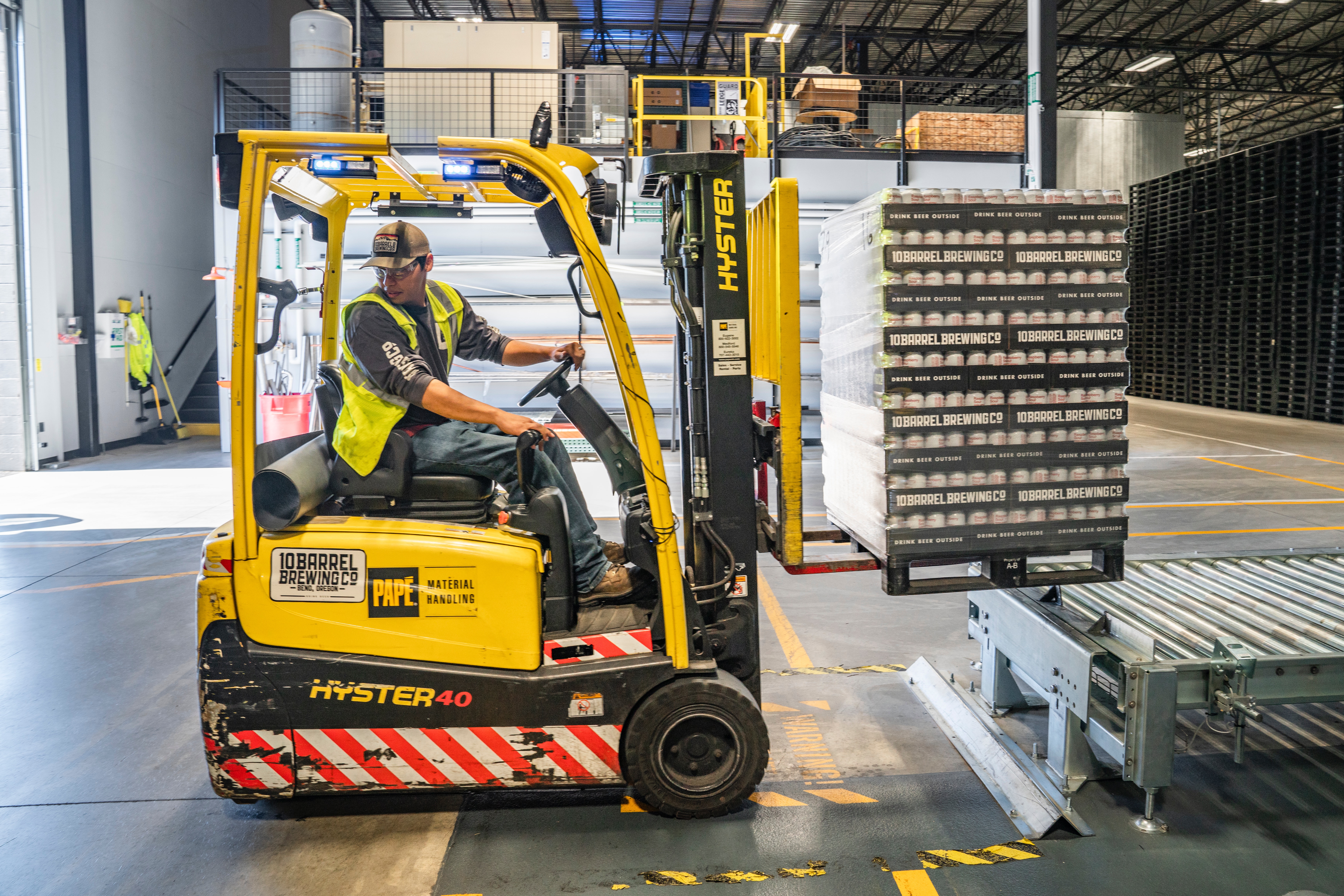Food supply chain management has always been challenging. Irrespective of whether you operate on a global scale or more locally, the need to always ensure a high level of delivery certainty, quality and safety for your finished products is still critical.
The greater visibility you have throughout your supply chain and the more you clearly communicate, the more effectively you can manage it. Not only is the focus on your supply chain key to meeting customer expectations, the ability to be able to make it as effective as possible, can provide a level of service that outstrips your competitors.
Let’s explore how improvements in the following areas can create points of differentiation which can then be used to gain a competitive advantage:
- Understanding and controlling costs
- Ensuring food distribution visibility
- Gaining access to competitive insights
- Improving inventory management
- Ensuring efficient communication and collaboration

Understanding and controlling costs
Within often very tight margins, a focus on cost in food is key. But it’s also vital to fully understand where the cost comes from at various stages of the supply chain so you know where best to focus improvement efforts.
The first step to controlling costs is to know your costs. If you measure them then you can manage them.
To do this, any costs need to include all the relevant elements including manpower, fuel, storage, transportation, logistics and sourcing costs. In addition, you must ensure you can easily access and review to enable the necessary follow-up actions.
Any supply chain complexity will make an offline or spreadsheet approach very slow and intensive and certainly after the event. Having the right ‘handle’ on costs in a timely and accurate fashion ensures the right decisions can be made.
This is where technology can play a part. You can not only build up costs at various stages of the process based on the core elements involved but can also update based on changing parameters and inbound prices, particularly where market costs may vary.
Ensuring food distribution visibility

Visibility of stocks of different categories enables them to be managed more efficiently. This can enable lot tracking and the pricing of products to align with seasonal or market changes. It can also support maintaining the place of origin for food products which is becoming increasingly important to consumers.
In addition, having a digital solution which provide real-time visibility of the distribution cycle ensures that any customer requests regarding quantity, quality and delivery can be dealt with promptly and correctly enhancing the overall experience and reliability of supply.
The introduction of Route Planning tools into many business solutions can manage the following all in one place:
- Deliveries
- Orders
- Vehicles and equipment
- Employees
- Picking and loading processes
- Product shortages
- Routing
- And other aspects of delivery
This not only helps minimise errors, but also can provide real time updates and transparency to customers enhancing the overall service provided.
Gaining access to competitive insights
Data insights are key in terms of being able to assess how historical events can guide responses to future events. Having a solution which enables key users to access past and current food supply chain records enables the analysis of information. For example, demand cycles which can then support better inventory planning.
Doing this can enable your business to potentially stay ahead of the competition as you can implement a supply chain strategy based on accurate and up-to-date information.
Improving inventory management

Stock accuracy and managing usage is key for food manufacturers - particularly for those with short shelf life products since it can have a major bearing on waste and fulfilment success.
Typical ERP solutions can have a one- dimensional approach when it comes to ‘inventory’. Solutions that can give food businesses greater visibility regarding yields, ageing and quality aspects supporting more effective allocation and distribution of food products will be in a better position to meet customer needs.
Solutions that think not only from a ‘first-in-first-out’ point of view but from a first-expired and special case, and can also automate and improve receipt and shipment processes will have a significant impact on performance and costs.
By being able to easily tailor deliveries to create customer-specific needs, including set days for standing orders, can make the whole delivery experience more satisfying. Using product lot preferences to indicate the age, freshness, or quality levels of the goods to be sent to customers can also ensure the quality of products delivered.
Using inventory management solutions, you can manage your products in real-time throughout the entire supply chain, including on-site, off-site and in-transit. And through real-time and automated tracking technologies, you can ensure accurate stock data at all stages of supply.
This can be further enhanced through network solutions that can trigger replenishment automatically based on actual demand at the customer location. This is instead of through manual intervention which supports amendments to existing orders and optimising stock on hand.
Although this requires some initial investment, it can ensure higher service levels and optimise stock levels and waste without the need for additional human intervention.
Ensuring efficient communication and collaboration

Many businesses operate with inefficient supply chains, simply because they haven't updated communications practices or moved to using new technologies.
Disparate or paper-based communications are still very prevalent in businesses. The reliance on human intervention with such things as email confirmation or printed approvals will only slow down processes and worsen the supply chain experience.
Businesses can move to a more unified communications platform and introduce tools to streamline their supply chain management approach. Using tools available, such as ERP, can open up access and allow updates by all key supply chain users, ensuring real-time awareness throughout the entire supply chain.
This can be extended further through mobile technologies which can be integrated with core solutions and so enable remote employees and contributors to communicate and collaborate with other stakeholders.
By introducing an improved communications approach, wider collaboration can take place across the supply chain which can remove confusion or uncertainty. The traditional approach of only looking inwards is replaced by one where stakeholders can have visibility across silos enabling any inefficiencies to be addressed more constructively.
This sharing and transparency of data may represent a step change for some where information is kept close, but leads to a far more consistent, continuous and collaborative approach which benefits all.
How can we help?
Food is at the heart of what we do and we have an industry-specific solution, Aptean Food and Beverage ERP, which is designed to help maintain the quality and service your customers love and expect.
Food is at the core of what we do — providing the right ingredients for a healthy ERP system.
Want to find out more? Use the link below and find out what Aptean Food and Beverage ERP could do for you.

